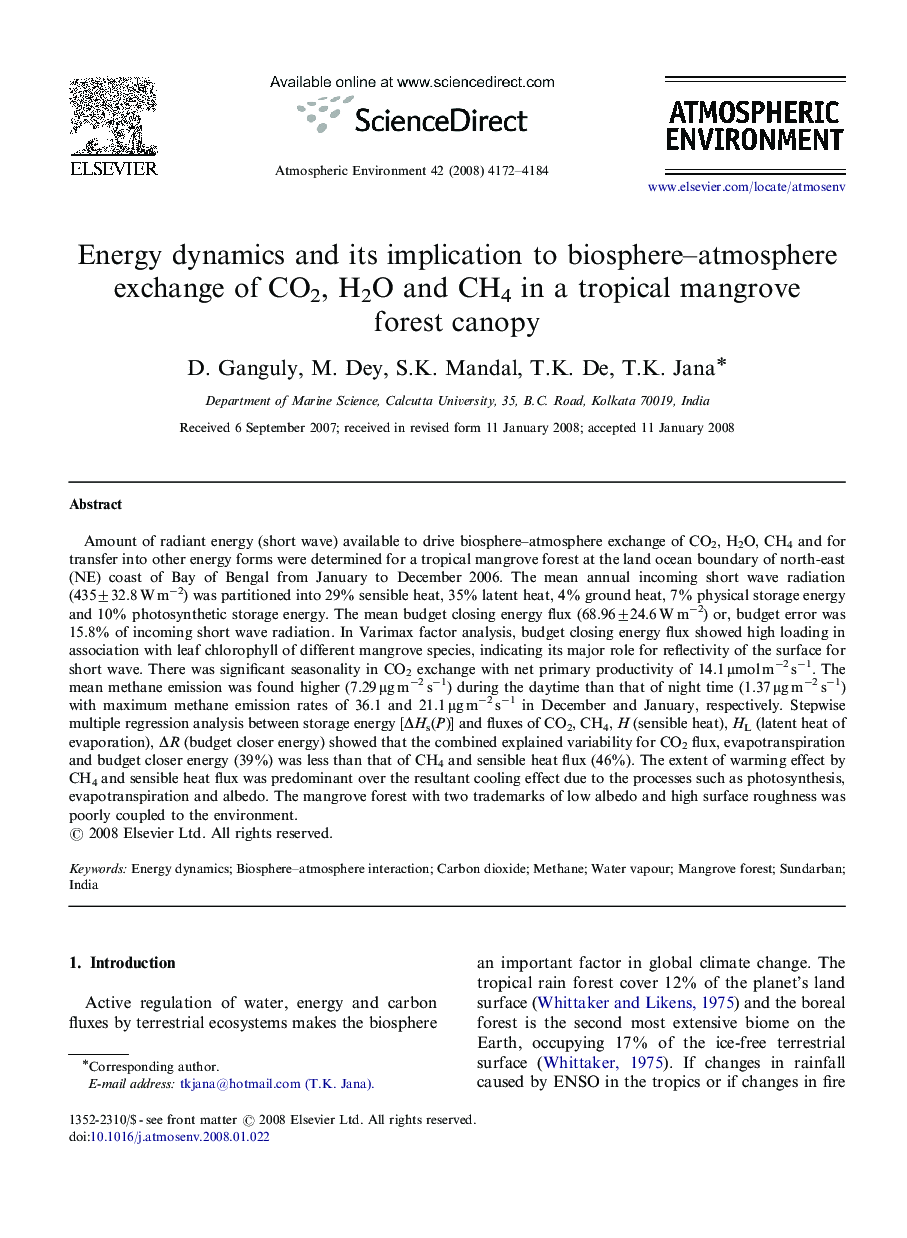| Article ID | Journal | Published Year | Pages | File Type |
|---|---|---|---|---|
| 4442911 | Atmospheric Environment | 2008 | 13 Pages |
Amount of radiant energy (short wave) available to drive biosphere–atmosphere exchange of CO2, H2O, CH4 and for transfer into other energy forms were determined for a tropical mangrove forest at the land ocean boundary of north-east (NE) coast of Bay of Bengal from January to December 2006. The mean annual incoming short wave radiation (435±32.8 W m−2) was partitioned into 29% sensible heat, 35% latent heat, 4% ground heat, 7% physical storage energy and 10% photosynthetic storage energy. The mean budget closing energy flux (68.96±24.6 W m−2) or, budget error was 15.8% of incoming short wave radiation. In Varimax factor analysis, budget closing energy flux showed high loading in association with leaf chlorophyll of different mangrove species, indicating its major role for reflectivity of the surface for short wave. There was significant seasonality in CO2 exchange with net primary productivity of 14.1 μmol m−2 s−1. The mean methane emission was found higher (7.29 μg m−2 s−1) during the daytime than that of night time (1.37 μg m−2 s−1) with maximum methane emission rates of 36.1 and 21.1 μg m−2 s−1 in December and January, respectively. Stepwise multiple regression analysis between storage energy [ΔHs(P)] and fluxes of CO2, CH4, H (sensible heat), HL (latent heat of evaporation), ΔR (budget closer energy) showed that the combined explained variability for CO2 flux, evapotranspiration and budget closer energy (39%) was less than that of CH4 and sensible heat flux (46%). The extent of warming effect by CH4 and sensible heat flux was predominant over the resultant cooling effect due to the processes such as photosynthesis, evapotranspiration and albedo. The mangrove forest with two trademarks of low albedo and high surface roughness was poorly coupled to the environment.
